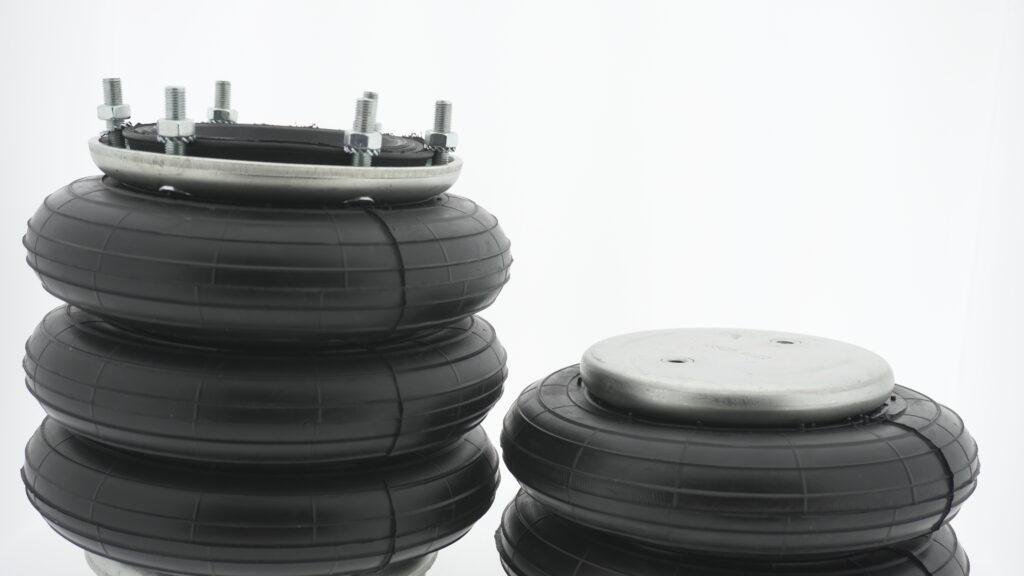
Regular cleaning and protecting air bellows ensures long-term reliability and efficient performance in industrial settings. Exposure to dust, chemicals, moisture, and UV radiation can degrade the rubber structure and reduce isolation efficiency. We use specific cleaning protocols and protective treatments tailored to each environment. This reduces downtime, enhances component life, and minimizes safety risks. Our protective approach includes scheduled maintenance routines, approved detergents, and mechanical shielding against impact or corrosion. Effective environmental shielding boosts performance across all industrial applications. Our methods maintain optimal vibration isolation, regardless of external exposure. Clean bellows operate with greater stability and safety margins.
Cleaning methods for air bellows in dusty environments
In dry, dusty conditions, cleaning and protecting air bellows starts with removing solid particles using compressed air. We ensure that the pressure remains below 2 bar to prevent damage to the outer rubber layers. After that, a lint-free cloth and neutral soap solution help dissolve oily residues or dry grime. Rinsing is always done using clean water, avoiding pressure sprays that could enter the air spring body. Once dry, we apply an antistatic surface treatment to prevent further dust adhesion. This layer also protects the reinforcing fabric from mechanical wear. Regular inspection detects cracking or early signs of degradation. Scheduled cleanings vary from monthly to quarterly depending on operating conditions and local particulate exposure.
Chemical resistance and cleaning for corrosive environments
Cleaning and protecting air bellows exposed to corrosive chemicals requires a precise procedure. We first identify the type of chemical agents present, such as acids, solvents, or oils. For each type, we select appropriate cleaning agents and protective coatings. Chlorobutyl or EPDM elastomers provide better resistance against chemical attack. We always use a pH-neutral solution for cleaning, avoiding strong detergents that can accelerate elastomer aging. Stainless steel components are inspected and, if necessary, coated with anti-corrosive film. Weekly inspections are standard in facilities using aggressive substances. Ensuring pressurized air systems remain leak-free is part of the protective strategy. This approach keeps air bellows stable under hostile conditions.
Moisture and condensation management in air spring installations
Cleaning and protecting air bellows in humid environments requires more than basic surface care. Moisture accelerates rubber degradation, causes corrosion on metal parts, and leads to mold formation. We apply moisture-repellent coatings and inspect sealing elements regularly. A desiccant system or air dryer is often installed upstream in the compressed air circuit. For external surfaces, we use silicone-based sprays to form a hydrophobic barrier. In areas prone to splash water or steam, mechanical shields are added to block direct contact. Inspection intervals are shortened to bi-weekly during seasonal humidity peaks. This strategy ensures long-term durability in moisture-rich industrial facilities.
UV protection and heat shielding for outdoor applications
UV radiation causes surface hardening and microcracks in rubber components. Cleaning and protecting air bellows used outdoors includes regular application of UV-resistant sprays. These form a transparent film that reflects harmful wavelengths. We also recommend installing mechanical shrouds when units are exposed to direct sunlight for extended periods. For heat sources such as furnaces or generators, thermal shields made of aluminium-coated fabric are installed. These reduce heat transfer and prevent pressure loss due to rubber softening. Periodic replacement of protective films is scheduled every three months. This approach maintains optimal performance and extends the air spring’s service life in open-air installations.
Mechanical impact and abrasive protection
Cleaning and protecting air bellows from mechanical damage involves a combination of shielding and positioning. We install stainless steel or composite guards around bellows exposed to machinery movement or loose debris. In installations with abrasive media, such as grinding or blasting, bellows are fitted with external sleeves made from reinforced rubber fabric. These sleeves absorb energy from flying particles and prevent scoring of the outer layer. The cleaning process includes checking for signs of tearing, delamination, or fabric exposure. When detected early, surface damage can be sealed with industrial-grade vulcanizing tape. Maintenance teams are trained to identify and report risk zones before incidents occur.
Storage guidelines for long-term protection
Before installation, cleaning and protecting air bellows during storage is critical. We store all bellows in a dry, temperature-stable environment between 15°C and 25°C. Direct sunlight and ozone sources are avoided, as both accelerate rubber decay. Units are stored upright on wooden or plastic pallets to prevent deformation. Each bellow is wrapped in protective film and labeled with rotation dates. If storage exceeds six months, a visual inspection and light cleaning are required before use. This ensures that elastomer properties remain within optimal tolerances. Proper storage directly affects performance, especially in applications with dynamic loads or high-frequency actuation cycles.
Integrated maintenance and protection planning
Cleaning and protecting air bellows is part of a broader preventive maintenance plan. We log all interventions, including cleaning dates, inspection notes, and material replacements. This record helps detect trends such as accelerated wear or environmental incompatibility. Maintenance intervals are based on usage intensity, exposure level, and air spring design. For critical operations, bellows are equipped with condition monitoring sensors that detect leakage, temperature, and stroke limits. These sensors alert operators to early signs of failure. Combining manual cleaning with predictive diagnostics ensures uninterrupted service and reduces total lifecycle costs. Our approach is scalable and adapted to various industrial sectors.
